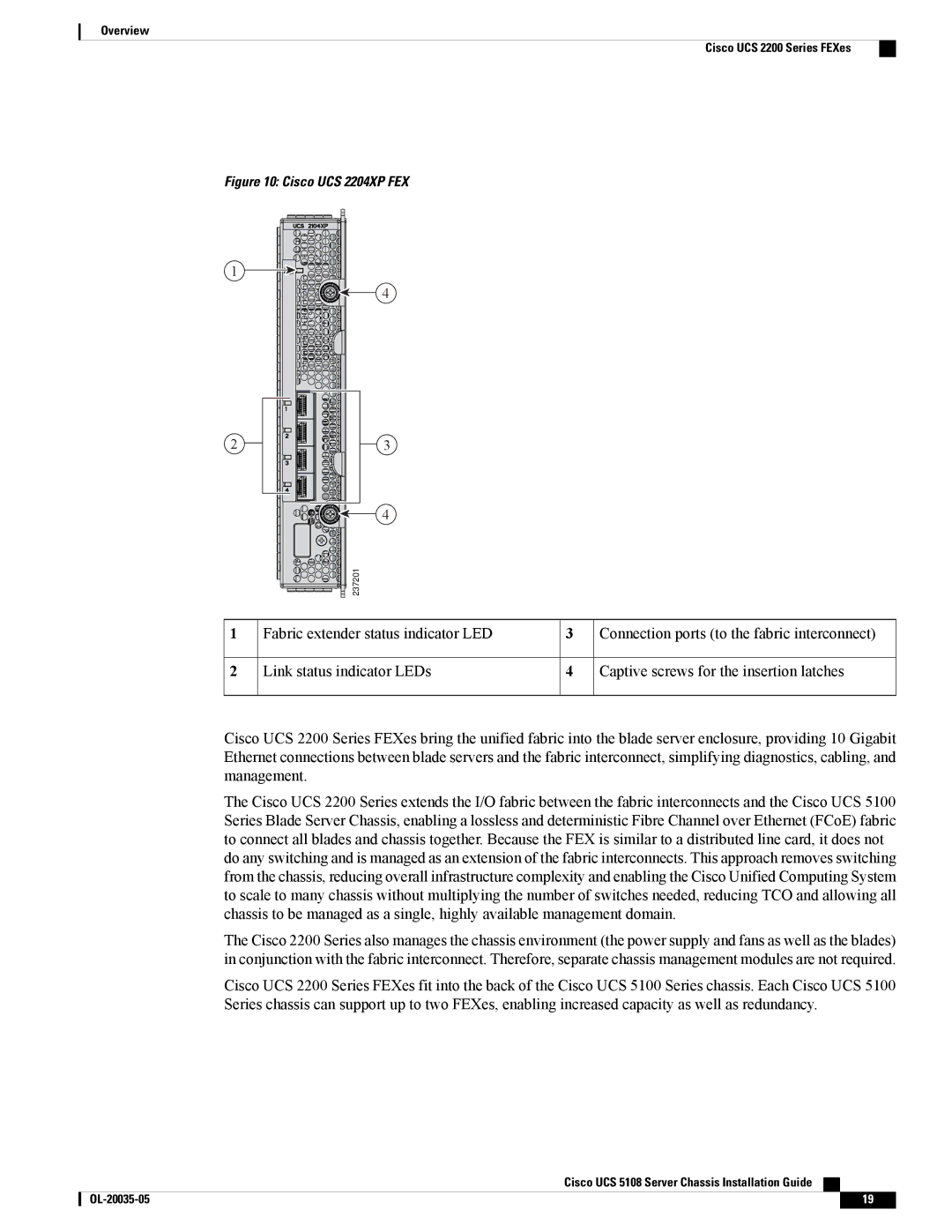
Overview
Cisco UCS 2200 Series FEXes
Figure 10: Cisco UCS 2204XP FEX
1 |
|
| 4 |
2 | 3 |
| 4 |
| 237201 |
1Fabric extender status indicator LED
2Link status indicator LEDs
3Connection ports (to the fabric interconnect)
4Captive screws for the insertion latches
Cisco UCS 2200 Series FEXes bring the unified fabric into the blade server enclosure, providing 10 Gigabit Ethernet connections between blade servers and the fabric interconnect, simplifying diagnostics, cabling, and management.
The Cisco UCS 2200 Series extends the I/O fabric between the fabric interconnects and the Cisco UCS 5100 Series Blade Server Chassis, enabling a lossless and deterministic Fibre Channel over Ethernet (FCoE) fabric to connect all blades and chassis together. Because the FEX is similar to a distributed line card, it does not do any switching and is managed as an extension of the fabric interconnects. This approach removes switching from the chassis, reducing overall infrastructure complexity and enabling the Cisco Unified Computing System to scale to many chassis without multiplying the number of switches needed, reducing TCO and allowing all chassis to be managed as a single, highly available management domain.
The Cisco 2200 Series also manages the chassis environment (the power supply and fans as well as the blades) in conjunction with the fabric interconnect. Therefore, separate chassis management modules are not required.
Cisco UCS 2200 Series FEXes fit into the back of the Cisco UCS 5100 Series chassis. Each Cisco UCS 5100 Series chassis can support up to two FEXes, enabling increased capacity as well as redundancy.
Cisco UCS 5108 Server Chassis Installation Guide
19 |
